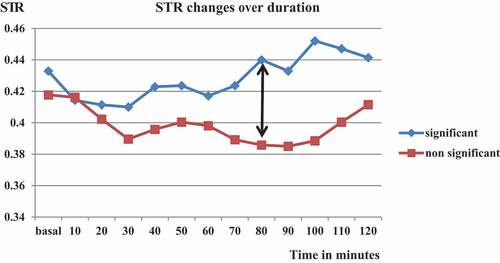Figures & data
Table 1. Baseline characteristics of patients with significant blood loss in comparison with patients with non-significant loss
Table 2. Patients'’ characteristic at minute-120
Figure 1. Pattern of changes of STR over duration of procedure. Record of mean±SD of STR at minute-80 was higher in group of significant blood loss (0.44 ± 0.07 Vs 0.38 ± 0.05, P 0.018). Abbreviations; STR systolic time ratio (STR), significant (significant blood loss), Non-significant (Non-significant blood loss)

Figure 2. Pattern of changes of heart rate (HR) over duration of procedure. Record of mean±SD of HR over time. Record of HR started to be significantly higher at minute-100 (87.5 ± 13 Vs.78.6 ± 12, P 0.05) Abbreviations; HR (heart rate), significant (significant blood loss), Non-significant (Non-significant blood loss)

